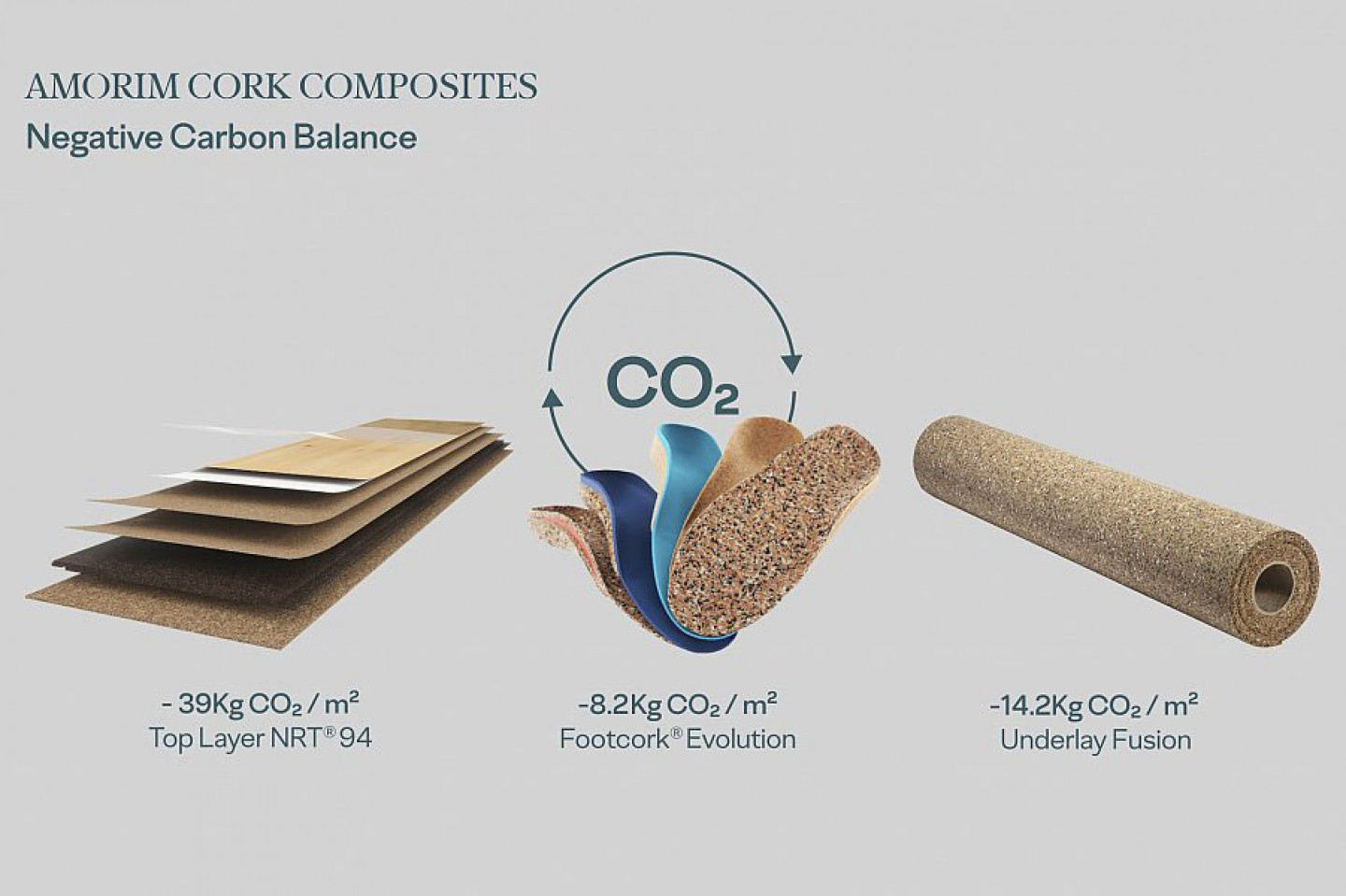Amorim Cork Composites commissioned EY to conduct three Carbon Footprint and Life Cycle Assessment studies, which concluded without exception that all the analysed products have a negative carbon balance, when considering the carbon sequestration of the cork oak forest. The studies, which assessed the environmental impacts of forest management, transportation of raw materials and production, concluded that the Top Layer NRT® 94 enables carbon sequestration of up to -39kg CO2 / m2, Underlay Fusion enables carbon sequestration of up to -14.2kg CO2 / m2, and Footcork® Evolution enables carbon sequestration of up to -8.2kg CO2 / m2.
Amorim Cork Composites, which is considered to be Corticeira Amorim's most technologically advanced company, develops innovative solutions for demanding industries - such as aerospace, automotive, construction, energy, furniture, footwear, sports and consumer goods. Some of the most representative products of its activities were considered for the Life Cycle Assessment studies. Top Layer NRT® 94 is a component that primarily consists of high-density cork, intended for the flooring industry. Underlay Fusion, which is also intended for the flooring industry, is a product applied between the concrete surface and the final floor, that aims to improve thermal comfort and acoustic insulation in homes. Footcork® Evolution is a material intended for applications in the footwear industry. Both Underlay Fusion and Footcork® Evolution are cork-based materials whose formulation includes by-products from other industries that would normally be thrown away and placed in landfills.
By incorporating these circular economy materials, Amorim Cork Composites helps reduce its environmental impact, while giving a second lease of life to end-of-life products. In fact, given that cork fosters synergies with other raw materials and by-products, recycled materials from other industries are used as a raw material whenever possible. Moreover, when ACC was founded in 1963 , its maxim was to value by-products from the production of cork stoppers.
The results of the studies provide relevant information on the environmental contribution of cork products and highlight the tremendous value of the cork oak tree in terms of sustainability.
It should be noted that these studies are part of Corticeira Amorim's continuous effort to extend the major contribution of the cork oak forest and the entire cork industry, by developing more research in this field, and provide quantifiable information to its over 27,000 national and international customers on how reduce the carbon footprint of their products, expanding joint efforts to respond to climate change.
The life cycle assessment, which was conducted in 2019 and 2020, was based on a cradle-to-gate approach, i.e. contemplating all environmental impacts up to the factory gate. The assessment also included additional information on the carbon sequestration of the cork oak forest. The methodology of the EY studies was based on the ISO 14040/44 (ISO, 2006) standards, complemented with guidelines from the Handbook - General Guide for Life Cycle Assessment - Detailed guidance (EC-JRC, 2010), and the International Reference Life Cycle Data System (ILCD). The production data was provided by Amorim Cork Composites, while data on the general production processes associated with the production of raw materials, energy, transport and waste management was obtained from the ecoinvent 3.5 database (Werner, et al., 2016).
